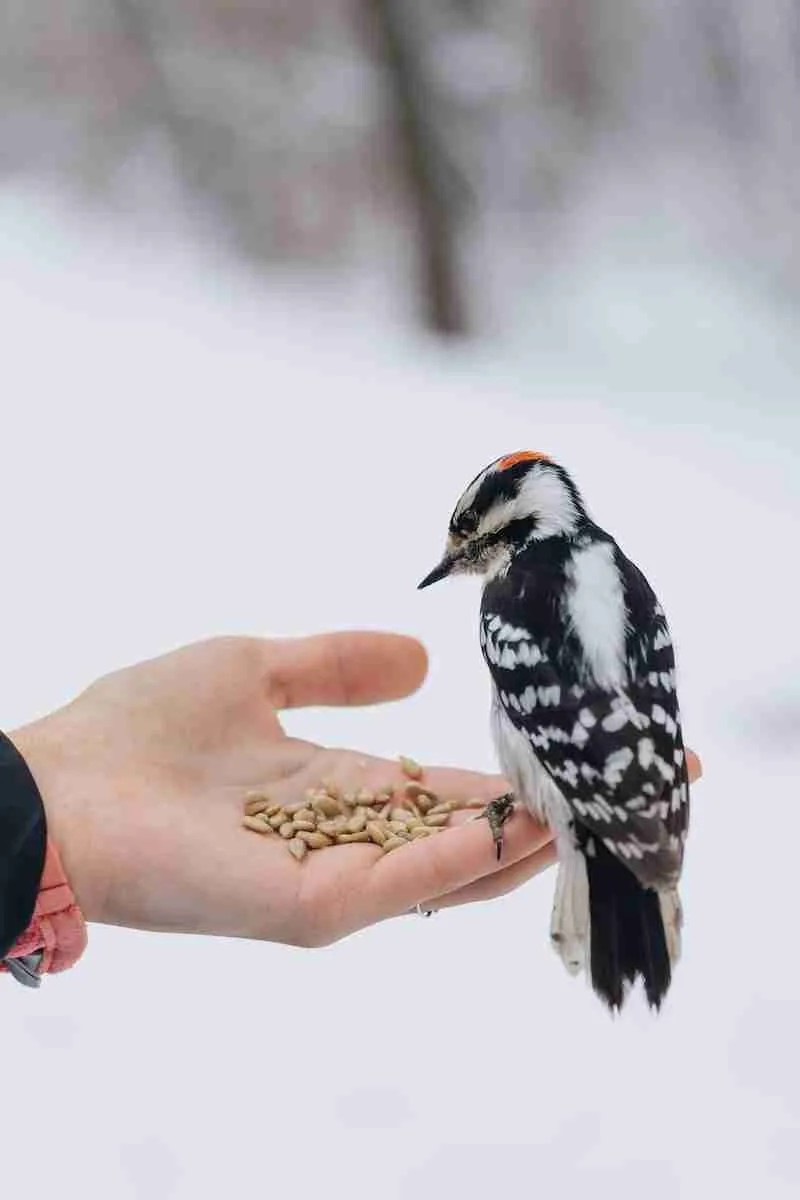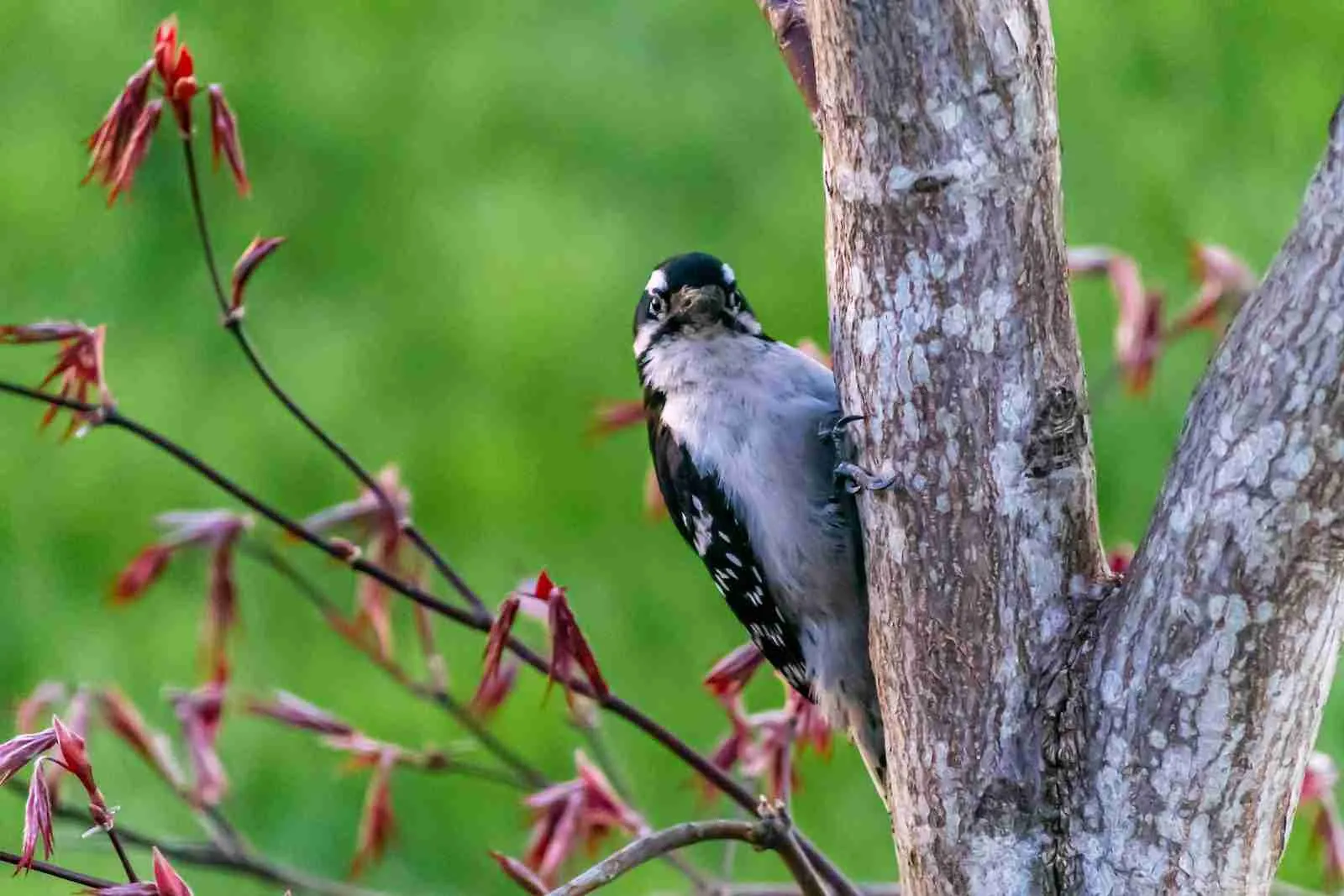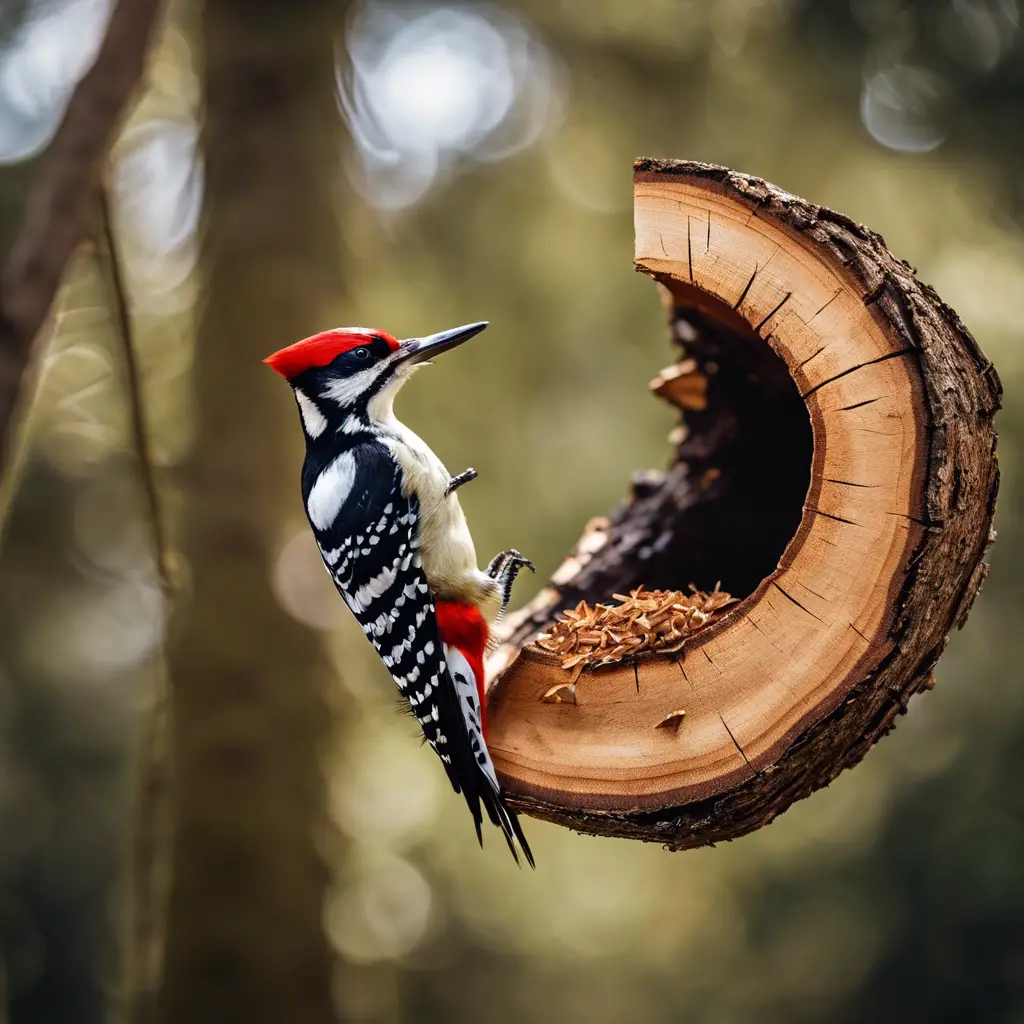West Virginia is home to many different types of woodpeckers. We will discuss the four most common types of woodpeckers in West Virginia: the red-headed woodpecker, the downy woodpecker, the hairy woodpecker, and the pileated woodpecker.
We will talk about their physical features, where they live, what they eat, and how you can identify them.
With photographs and important data, we’ll present the most prevalent woodpeckers in West Virginia. Only trustworthy sources were used to gather the data, which was subsequently verified with an Ornithologist.
Most Common Woodpeckers in WV
Red-headed Woodpecker
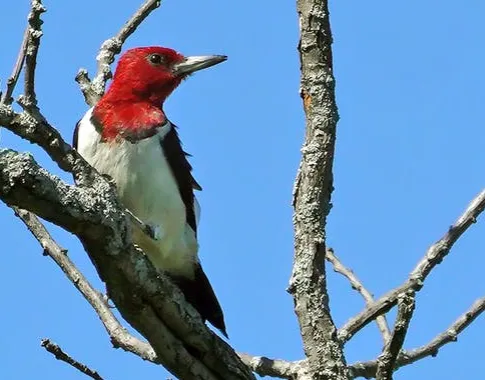
The Red-headed Woodpecker is a beautiful bird that is easily recognizable by its striking redhead. These woodpeckers are small to medium-sized birds, measuring between nine and ten inches in length.
They have black bodies with white stripes running down their backs, and their wings are predominantly black with white patches.
As their name suggests, Red-headed Woodpeckers have a bright red head which is often the first thing people notice about these birds.
Red-headed Woodpeckers are cavity nesters and will use old woodpecker holes, or even make their own nests by chiseling away at dead branches.
They typically lay four to six eggs per clutch, and both parents help to incubate the eggs and care for the young birds. These woodpeckers are found in a variety of habitats including forests, woodlands, and even suburban areas.
They are most common in the eastern United States, but can also be found in parts of Canada and Mexico.

Northern Flicker
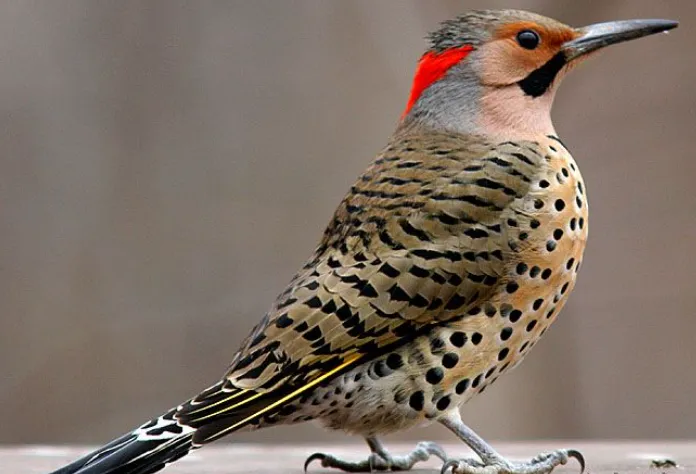
The Northern Flicker is a stocky bird with a long tail. They have a black and white barred back, and rusty brown underparts. The male has a red crescent on their breast, while the female has a buff-colored one. These birds are about 15 inches in length and have a wingspan of nearly 24 inches.
The Northern Flicker is the state bird of Wyoming, and they are also the official woodpecker of Canada. These birds are very interesting, and you can often find them in your backyard! If you’re lucky enough to spot one, be sure to take a picture! Thanks for reading, and I hope you have a great day.
Northern Flickers are not shy about visiting backyards in search of food. The most likely place to find them is on the ground, where they hunt for ants and other insects. They will also come to backyard bird feeders for suet, peanuts, and sunflower seeds. In the winter, they will eat berries and fruits.

Red-bellied Woodpecker
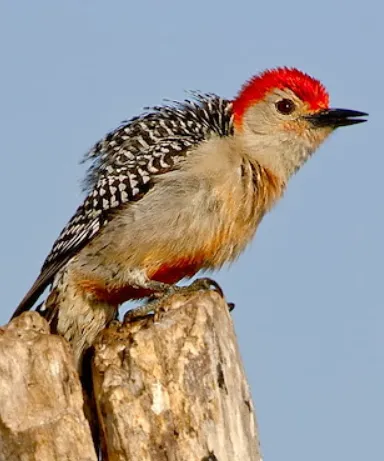
The Red-bellied Woodpecker is a common sight in West Virginia. This bird is about nine inches long and has a wingspan of about 16 inches. The male has a red cap, while the female’s head is black with a white stripe down the middle.
These birds are usually seen clinging to trees or utility poles, where they search for insects. They are also known to store food in crevices in trees for later consumption.
Red-bellied Woodpeckers are beneficial birds because they help control insect populations. They have strong beaks and claws that allow them to drill into tree bark to find insects.
These birds can also be very vocal, making a variety of sounds that can be heard from a distance.
Red-bellied Woodpeckers are common in West Virginia and play an important role in controlling insect populations.
They are easily recognizable by their black and white plumage and loud calls. These birds are beneficial to the environment and should be protected.

Downy Woodpecker
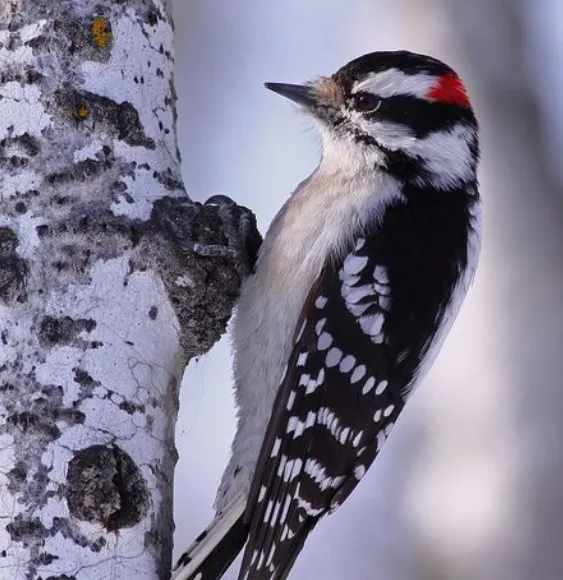
The Downy Woodpecker is a small woodpecker that is found in forests and woodlands throughout North America. They are the most common woodpecker in the United States. The Downy Woodpecker is black and white, with a small red crest on its head.
They have a long, pointed beak that they use to peck at trees to find insects. They are about six inches long and weigh about half a pound.
The Downy Woodpecker is a very active bird. They spend most of their time climbing up and down trees, looking for food.
They will also fly from tree to tree, or from one side of a tree to the other, in search of food. They are very agile and can move quickly through the trees.
The Downy Woodpeckers are a cavity nester. This means that they build their nests inside tree cavities. They will also use old woodpecker holes or any other hole that is big enough for them to fit into. They will line their nests with bark, leaves, and other materials.
The Downy Woodpecker is a very vocal bird. They make a variety of sounds, including peeps, chatters, and whines. They use these sounds to communicate with each other.

Yellow-bellied Sapsucker
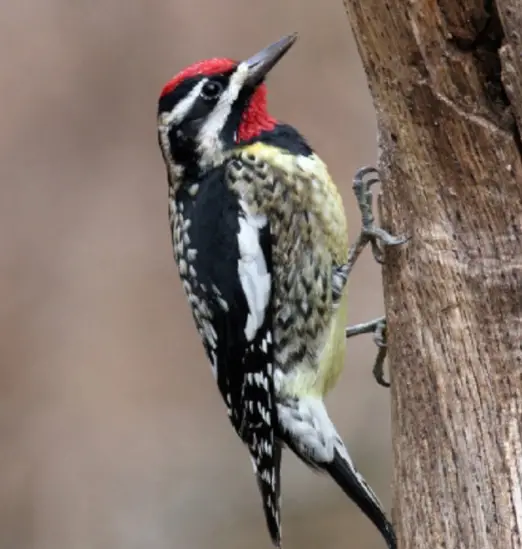
The Yellow-bellied Sapsucker is a small woodpecker that can be found in North America. These birds are most commonly seen in the eastern parts of the United States, but they have also been known to inhabit parts of Canada and Mexico.
The Yellow-bellied Sapsucker gets its name from its habit of drilling holes in dead trees to drink the sap. This bird is easily recognizable by its black and white plumage, as well as its distinctive red cap.
The Yellow-bellied Sapsucker is a fairly small woodpecker, measuring about six inches in length. It has a mostly black body with white stripes down its back and wings. The head is also black, but it has a distinctive red cap.
The bill is long and thin, and the eyes are black. The feet are large and strong, perfect for gripping onto tree branches.
Yellow-bellied Sapsuckers can be found in a variety of habitats, including forests, parks, and gardens. They prefer to live in areas with deciduous trees, as these provide the best opportunity for drilling holes and drinking sap. These birds are not migratory, so they can be seen in their habitats all year round.

Related post: Types of Woodpeckers in Vermont
Acorn Woodpecker
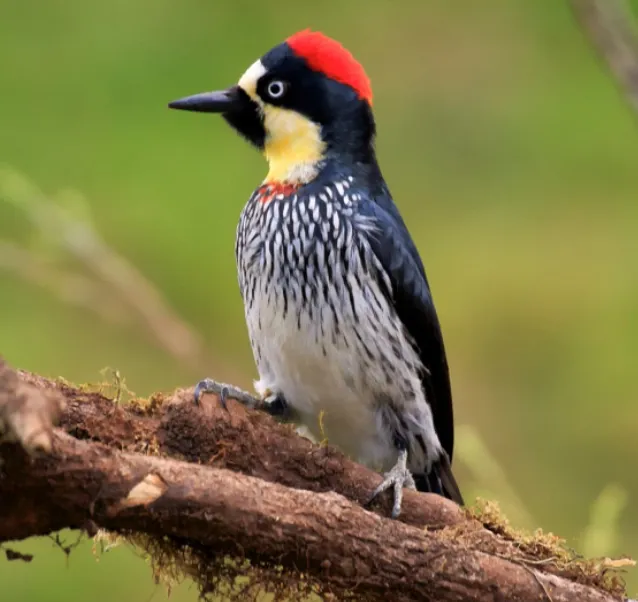
The Acorn Woodpecker is a native bird to North and Central America. They are black and white with a red cap on their head. The adult male has a completely red head, while the female has a red cap with a white stripe down the middle.
These woodpeckers are small to medium-sized, measuring at around nine inches in length. They are mainly insectivores, but will also eat nuts and acorns.
Acorn Woodpeckers are cavity nesters. This means they excavate their own nests in trees. They prefer to nest in dead or dying trees, as these provide easier access to the cavities they need for nesting.
Nests are typically around six inches deep and four inches wide. They will also use old woodpecker holes, as well as nest boxes if they are available.
These woodpeckers are very social birds and live in groups of up to twelve individuals. They communicate with each other through a variety of calls, including a “rattle” call that is used to warn others of potential predators. Acorn Woodpeckers are also known for their drumming, which they use to communicate as well.
The Acorn Woodpecker is a very interesting bird with a lot of unique features. If you’re ever in their habitat, be sure to keep an eye out for them!
If you’re ever in their habitat, be sure to keep an eye out for them! These woodpeckers are cavity nesters and live in groups of up to twelve individuals. They communicate with each other through a variety of calls, including a “rattle” call that is used to warn others of potential predators.
Acorn Woodpeckers are also known for their drumming, which they use to communicate as well. The Acorn Woodpecker is a very interesting bird with a lot of unique features.

Hairy Woodpeckers
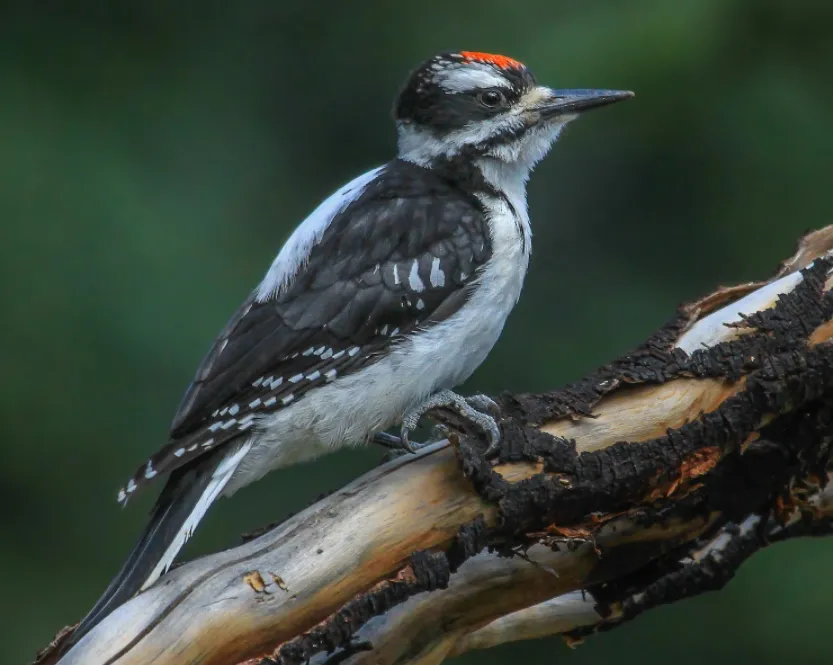
The Hairy Woodpecker is a bird in the woodpecker family. The adult Hairy Woodpecker has a black back, white wings and tail, and a white belly. The throat and face are white with a black line through the eye.
Adult males have a red patch on the back of the head. The bill is long and straight. The Hairy Woodpecker is about 16 cm long with a wingspan of about 30 cm.
The Hairy Woodpecker can be found in woodlands in North America. It is a common bird in West Virginia. The Hairy Woodpecker eats insects, spiders, and other small invertebrates.
It can be identified by its black back, white wings and tail, and white belly. The red patch on the head of adult males is also a distinguishing characteristic.
The Hairy Woodpecker is a common bird in West Virginia and can be found in woodlands. It eats insects, spiders, and other small invertebrates. The Hairy Woodpecker can be identified by its black back, white wings and tail, and white belly.
The red patch on the head of adult males is also a distinguishing characteristic. If you see a bird matching this description in West Virginia, it is likely a Hairy Woodpecker!

Pileated Woodpeckers
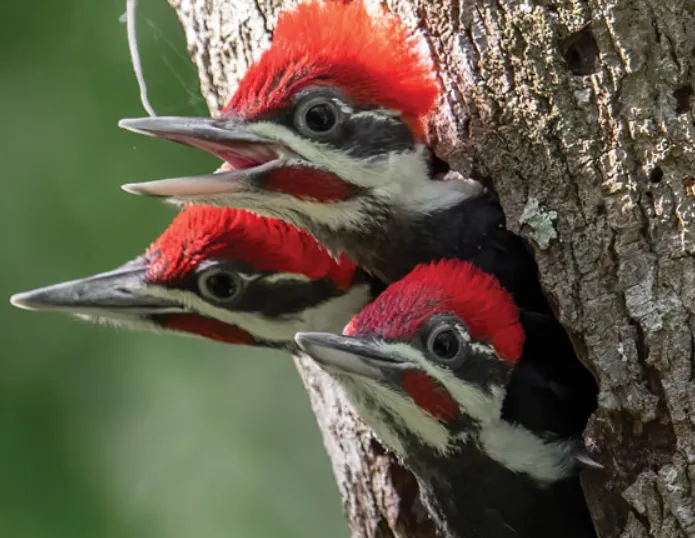
Pileated Woodpeckers are the largest woodpeckers in North America. They have a black head with a red crest and a white belly. They have a wingspan of about 24 inches and weigh about 12 ounces.
Pileated Woodpeckers live in forests throughout North America. They eat insects, fruits, and nuts.
Pileated Woodpeckers are known for their loud call, which sounds like a laugh. They mate for life, and nest in tree cavities. Both parents help to raise the young. Pileated Woodpeckers can live up to 20 years in the wild.
Pileated woodpeckers are some of the most interesting creatures in North America. With their black and white feathers, red crest, and large size, they are easily identifiable.
They live in forests throughout the continent and eat a variety of things, including insects, fruits, and nuts. Pileated woodpeckers are known for their loud call, which sounds like a laugh.
They mate for life and raise their young together. While they typically live up to 20 years in the wild, it is not uncommon for them to reach 30 years old in captivity.

What does it mean when you have a woodpecker in your tree?
It means that you have a friend! Woodpeckers are helpful birds because they eat insects that can damage trees. They also make holes in trees which help to circulate air and water. So, next time you see a woodpecker in your tree, be sure to say hello! And if you don’t have a tree, be sure to get one so you can make some new feathered friends.
Is it illegal to shoot a woodpecker in West Virginia?
The answer to this question is a bit complicated. Woodpeckers are protected by the Migratory Bird Treaty Act, which makes it illegal to kill them without a permit. However, there are some exceptions to this rule. If the woodpecker is causing damage to property, the owner may be able to obtain a permit to shoot the bird.

An avid ornithologist, zoologist and biologist with an unwavering passion for birds and wild animals.
Dr. Wilson’s journey in ornithology began in childhood and led him to obtain a Ph.D. in Ornithology from the prestigious Avian Research Institute. He has worked closely with renowned experts in the field and conducted extensive research and field studies globally.

